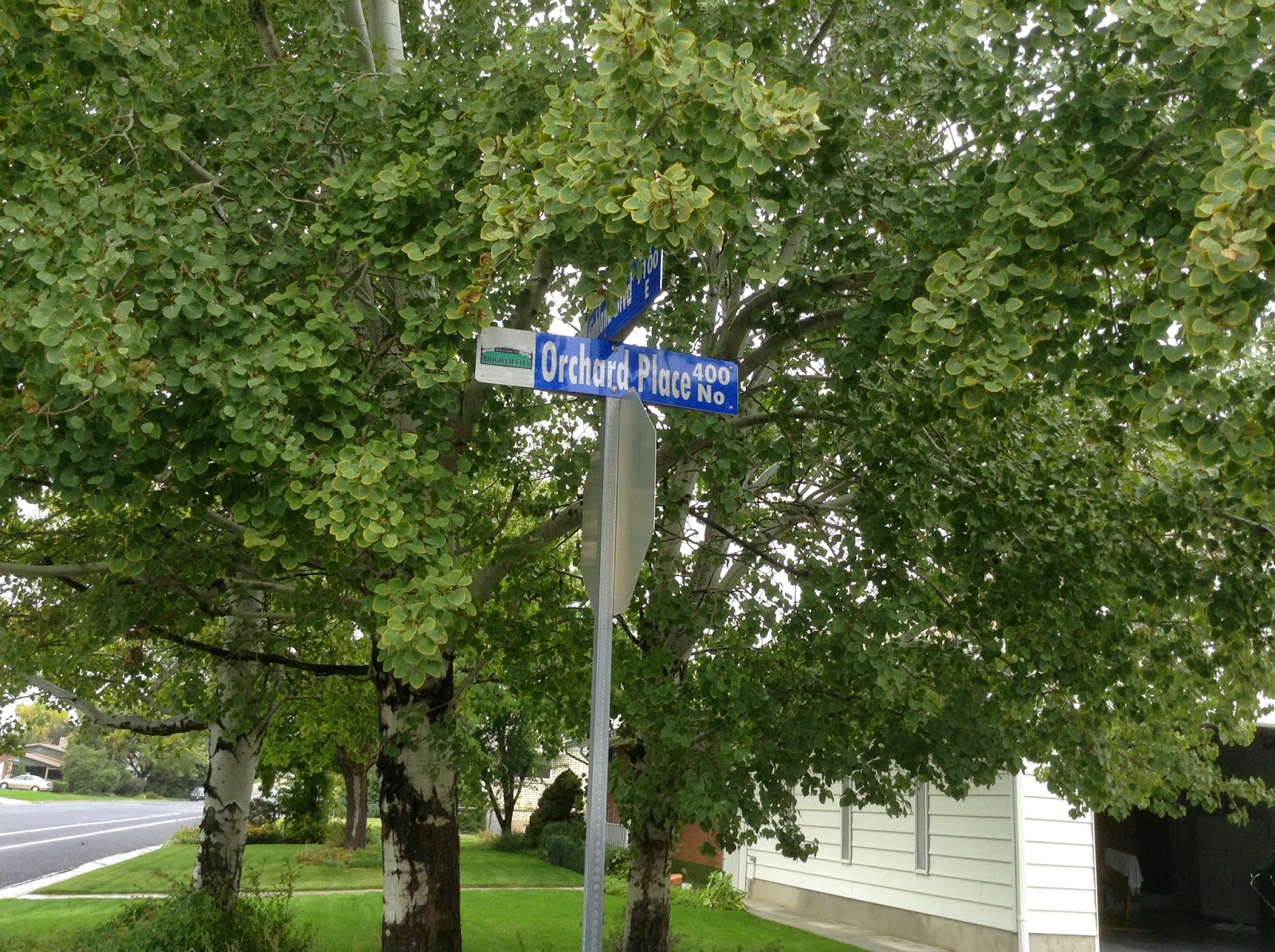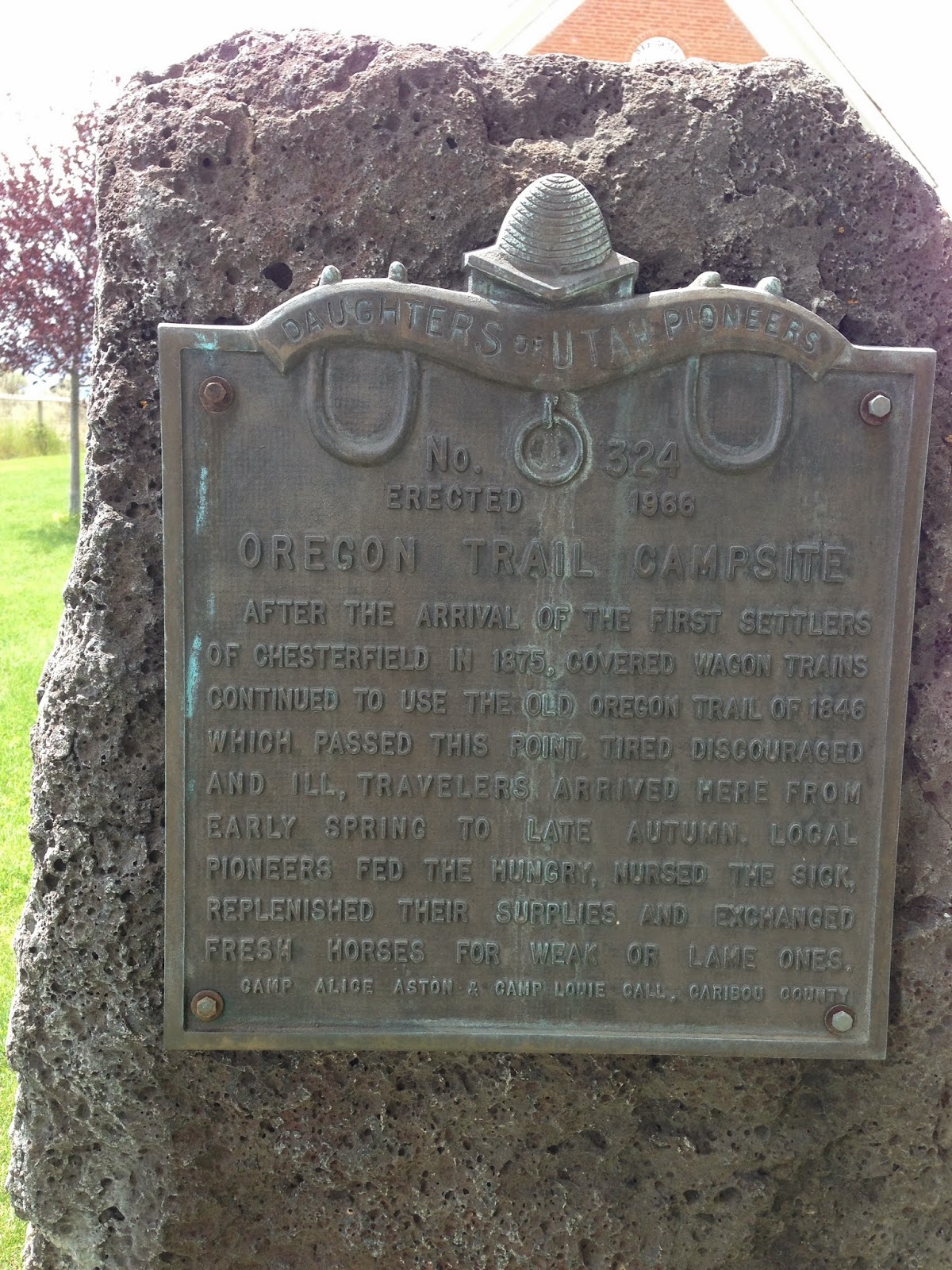For Mom's
91st birthday this year we took her to Brigham City so she could show us
various sites of interest to our family. Before starting we fortified
ourselves with a visit to Maddox, a business which was started by Mom's distant cousins, Irv and Wilma (Kotter) Maddox. It has become a destination restaurant now. After dinner, our tour began.
It
was about 1903-4 that the family of George Richard and Euphemia Jane
Freeman came to Brigham City. The two oldest boys left England first,
with the rest of the family following a year later. George Richard Freeman's family were shopkeepers and shoemakers for the most part.
Bert, Ernest, Wilford, Alf, Ida
Annie, George R., Euphemia Jane, Harry
Their first home in Brigham was a rental south of the Tabernacle.
The
employment they were hoping for in Brigham City didn't work out, but
they were offered a chance to buy a farm just east of town. The house
on the farm wasn't much more than a shack that has long since
disappeared. Farming was a new experience for the family. They had no
farm implements at first but eventually bought an old horse and wagon
and learned to plow and milk a cow.
Hillside Farm -about 1935
Today
the old shack is gone and the farm that was out of town is now a
neighborhood on Orchard Place. The modern home is on the site of the
old shack. There used to be a pond above the house on the mountainside.
Several
of the children and grandchildren of George R. and Euphemia Jane lived
in Brigham after they grew up. Most of their homes have now been
modernized, so look a bit different than they did in the old days.
Wilford Freeman home. It has no carport in the old days.
Alf Freeman home
When
Ernest and Ruby Freeman were first married, they lived with Ruby's
mother. Later, they bought the home of Ernest's parents on 2nd North
and 2nd East.
Rather
than irrigating with sprinklers, the stream of water came to the lot
twice a week for a certain period of time. The gates for the water were
under metal covers. When it was time for the water turn, Ernest would
open the metal cover and put his hoe down into the hole to pull the gate
cover off one pipe so the water would then run into his garden.
Dean Freeman home
The
Kotter family arrived in Brigham City earlier than the Freemans, in the
1860s. Henry Kotter had a farm north of town which he gave to his sons
to run after his first wife died. In 1893 he married Minnie Erickson
and built a house in town. He died in 1916, but she lived in that house
for 20 more years.
Kotter Family
Ruby, Herman, Etta, Victor,
Elmer, Wendell,
Gertrude, Minnie, Norma, Homer
Ernest's children fondly remember visiting their Grandma Kotter.
Dean's
aunt, Norma Kotter Hodson, bought the house next to him. Her father,
Henry Kotter, was a brickmaker. The walls of the original part of this
house were very thick because they were built of adobe bricks made by
Henry Kotter. Even without air conditioning, this house was cool in the
summer because of the thick walls.
Kids in Brigham City attended seminary in the old seminary building which is still there.
The old Relief Society granary building is also still standing.
Another enterprise important in Brigham City history was Baron Woolen Mills which is still standing though it has been destroyed by fire.
It was fun to drive around and reminisce with Mom and hear her stories about the old days in Brigham City.
 å
å
















































